2010 – The Highlands and Islands of Scotland
Date of tour: July 2010
Duration of tour: 4 weeks (one week to get there and back from Germany, two weeks island-hopping, one week on the Scottish mainland)
Total cost of tour (for two people): approx. €750 to get to the UK and back, plus £2000 in Scotland and the islands.
Map showing points of interest
Getting there and around
The name of the ferry company that operates services in the Inner and Outer Hebrides (pronounced HEH-bri-dees) is Caledonian MacBrayne (CalMac- see Photo 1). If you know your itinerary, it is advisable to book your ferry journeys in advance. Some of the routes can get very busy, especially in summer and on weekends. If you are planning on doing a lot of travelling by ferry, CalMac's Island Rover or Island Hopping tickets might be a cheaper option.
To get to Scotland from mainland Europe, DFDS operates a service from Amsterdam to Newcastle for approx. €500 for two people and two bikes in a cabin. (Unfortunately, DFDS stopped operating their passenger route to Edinburgh in 2010.)
The Inner Hebrides are the islands closer to mainland Scotland, which include Skye, Mull, Tiree and Islay (pronounced EYE-la) and the Outer Hebrides are the islands further away (Lewis, Harris, Uist, etc.). The two groups of islands are separated by seas known as The Minch and the Sea of the Hebrides.
NOTE: Petrol stations are few and far between on some Hebridean Islands (especially on the Outer Hebrides) and not all of them are open on Sundays. Make sure you fill your tank on Saturdays!
Good motorbiking routes
(Click on the photos on the right to enlarge them.)
1. Newcastle -> Ardrossan. The Amsterdam-Newcastle ferry docks at around 9.30am, leaving plenty of time for the route from the North Sea coast to the southwest coast of Scotland. The county of Northumberland (my home county) presents plenty of good motorbiking routes and, across the Scottish border, the route from Jedburgh (see Worth a visit below) to the west coast also offers some interesting roads. From the North Shields ferry terminal, take the A1058 Coast Road into Newcastle, then follow the signs for the airport to get onto the A696. Follow this road until it joins the A68, then after Jedburgh take the A72, then A71 west until you reach Ardrossan.
2. The Isle of Arran. The eastern shore of this island is reached by a 60-minute ferry crossing from Ardrossan on the southwest coast of Scotland. On the northern tip of the island, a 30-minute ferry runs from Lochranza to Claonaig on the Kintyre peninsula. Both ferries sail regularly throughout the day as Arran is a popular visitor destination. In fact, it can get very busy at weekends when it fills with Glaswegians making the 2-hour trip from the city to the island known as "Scotland in miniature".
Arran is small island (32km from north to south). It has a main 90km-long coastal road around the outside, a secondary road across the middle (the 19km-long "String") and a single track road across the hills in the south ("The Ross" at 15km). Photo 2 was taken on The Ross and Photo 3 on the coastal road. The highest point on the island is Goatfell at 874m, from which on a clear day you can see over to Ireland. There are a couple of castles (one a ruin) and a whisky distillery, as well as some touristy visitor attractions in the larger towns, but the real beauty of this island is in its countryside and its views.
3. Islay (pronounced EYE-la). At the other side of the Kintyre peninsula from where the Lochranza-Cloanaig ferry drops you is Kennacraig, where you can catch the ferry for the 2-hour crossing to Islay. Five miles to the north of Kennacraig is the pretty little town of Tarbert, whose harbour is often full of luxury yachts (Photo 4).
Islay is known for its whiskies (the island has eight whisky distilleries) and also for its wildlife and beaches. There's not much in terms of good motorcycling routes but the island's long history can be explored in the Museum of Islay Life in Port Charlotte and at Kildalton Chapel, home to Kildalton Cross, which is considered to be one of the finest early Christian crosses in Scotland (Photo 5). And of course there are lots of different whiskies to sample in one or more of the distilleries.
4. Back on the mainland, the A83 follows the saltwater Loch Fyne up to the lovely lochside village of Lochgilphead, at which point the A816 branches northwest through Kilmartin Glen (glen means valley). For the first couple of miles tall yachts sail right beside the road as they manouevre their way along the Crinan Canal which links Loch Fyne on the east with the Sound of Jura on the west. In Kilmartin Glen, prehistoric stone circles and the Dunadd Royal Stronghold can be found (see Worth a visit below). The A83 continues to wind its way around the coastline until it reaches the next major port of call: Oban (see Worth a visit below).
5. The Isle of Mull. One hour by ferry from Oban lies the Isle of Mull, one of the best islands in the Inner Hebrides for motorcycling routes. Most of the roads are single track and the route around the western edge of the island climbs up and around hills as it negotiates its way along the coastline. Mull is a mountainous island, the highest peak falling just short of 1000m and where the road ventures inland, it follows small rivers through picturesque glens (valleys). The largest town on Mull is Tobermory (which has the only petrol station for miles around) and the Isle of Mull also provides access to the tiny island of Iona (see Worth a visit below for more on Tobermory and Iona). Scattered along the coastal road is the occasional shipwreck (Photo 6).
6. The island of Tiree is a low-lying surfers' paradise to the west of Mull. As the crow flies, it's not that far from Tobermory but it can only be reached by taking the ferry back to Oban, then a ferry from Oban to Tiree and back again. Due to Tiree's low altitude, westerly fronts drift right on by and as a result, the island has one of the best sunshine records in the British Isles. There are not many kilometres of road on Tiree and all roads are single track with passing places and beautiful views for miles around. Despite our best efforts, our heavy touring bikes were no match for one young resident, who took it upon himself to out-manouevre our attempts to ride around the island by going straight over it on his motocross (Photo 7).
7. The road from Oban to Fort William is a good motorcycle route. It follows the coastline along well-tarmaced roads and over impressive bridges (such as the one at Connel) and offers magnificent views of hills, valleys and lochs. Every now and again a castle ruin comes into view - one particularly oft-photographed ruin is Castle Stalker on a tiny island barely bigger than the castle itself, by Portnacroish. Twenty kilometres north of Portnacroish, the road takes a strange route at Ballachulish, as it turns back on itself to lead up to the bridge and onto the A82. Twenty kilometres north of Ballachulish is the popular tourist resort of Fort William (see Worth a visit below).
8. The Isle of Skye (see Worth a visit below). There are two main ways to get onto the Isle of Skye from the mainland - either via ferry from Mallaig at the end of the A830 or across the bridge at Kyle of Lochalsh on the A87. Both routes are equally as pleasant to travel on and have sights worth visiting - the A87 offers the chance to visit Eilean Donan Castle, one of Scotland's most famous castles, whereas on the A830 you can immerse yourself in the story of Bonnie Prince Charlie at Glenfinnan.
Along with Mull, the Isle of Skye is one of the best islands in the Inner Hebrides for motorcycling routes. The southern end of the island has mountains that spring from sea level to 1000m and there are small single track roads close to them. The roads in the northern part of the island skirt the coastline and are single track in places. Quiraing Road is a very nice route over the hills from Staffin Bay on the northeast coast to the port of Uig, from where the ferry to the Outer Hebrides sails. The road ends above Uig with fantastic views over the town. Here it joins a steep single track stretch of the A855, which takes you down to the port via a sharp hair-pin bend.
9. From Uig on the Isle of Skye, a 2-hour ferry takes you to the Outer Hebrides. The islands of North Uist, South Uist and Benbecula are connected to each other by single track causeways which are just above sea level at high tide. Benbecula and North Uist are both flat with huge sandy beaches and quaint little thatched croft houses (Photo 8). South Uist is the largest of the three islands and is more hilly (up to 620m). Heading down the A865, it's worth taking a break at the Kildonan Museum to find out what life on the islands used to be like. At the southern end of South Uist, a causeway leads over to the island of Eriskay, where a ferry takes you on to the island of Barra. The views from South Uist over the Sound of Barra on a clear day are spectacular (Photo 9). It is worth noting that the first language on these islands is Gaelic (pronounced gallic), although many people also speak English.
10. The ferry from Eriskay arrives at the northern end of the island of Barra, near to the airport. The airport is unusual in that the runway is actually the beach, so planes can only take off and land at low tide. On the south side of the island is Castlebay, a pretty little town with a church and a castle in its bay. Continuing south, a causeway leads to the island of Vatersay, where there's a lovely place to camp in the dunes (see Accommodation below).
11. Harris and Lewis. The islands of Harris and Lewis in the Outer Hebrides are actually one island, Harris being the more mountainous southern part, famous for its Harris Tweed cloth. There is a fantastic motorbiking route from the southern tip of Harris along the east coast. Known as The Golden Road (in reference to the cost of building it), this single track road twists up and around mountains and affords some spectacular sea views. The northern part of the island (Lewis) is relatively flat and the roads are not very exciting but there are some nice views and some interesting places to visit along the way (see Worth a visit below).
12. The ferry back to mainland Scotland from Stornoway on Lewis takes you to Ullapool where there is a nice campsite (see Accommodation below). The roads to the north, between Ullapool and Durness (on the north coast) offer good motorcycle routes, especially the B869 which has some steep stretches and some good viewpoints.The last 19 miles of road to reach Durness is single track. There is a campsite in Durness but the Lazy Crofter Bunkhouse is a good place to stay.
13. The single track road eastwards from Durness winds around Loch Eriboll (Photo 10) and then crosses the Kyle of Tongue via a causeway. There is dramatic scenery all along this stretch of road until it starts becoming more industrialised towards the town of Thurso. Shortly after Thurso is the lighthouse at Dunnet Head (Photo 11), which, contrary to popular belief, is the most northerly point of mainland Britain (John o'Groats is slightly further south). Beyond Dunnet Head on the way to John o' Groats is Castle of Mey, where the Queen Mother used to spend her summers.
On reaching the most northerly point of Scotland, there are two main alternatives for heading south: either on one of the main A-Roads (A99 from John o' Groats or A9 from Thurso) or the much more interesting option of doubling back on the A836 past Thurso and taking the extremely scenic A897 along Strath Halladale (a strath is a valley which is wider and less steep than a glen) (Photo 12). Then follow the River Helmsdale along the Strath of Kildonan until you reach the pretty little port town of Helmsdale, where there is a very nice four-star hostel.
14. The A9 follows the northeast coastline down past Dunrobin Castle (see Worth a visit below). A nice diversion just after this castle is to take the A839 west to Lairg and then the A836 south where, at the right time of year, you can see salmon leaping up the Falls of Shin (Photo 13). You also pass the magnificent Carbisdale Castle (Photo 14) near Culrain, which was used as a youth hostel for many years, but is now in danger of closing due to the costs of refurbishment.
15. South of Inverness are the Cairngorm Mountains, which have some excellent motorcycling roads once you venture away from the main A9. Just south of this range of mountains, the small town of Dunkeld (Photo 15) on the River Tay is a nice place to make a stop. Heading further south, if you're not too castled out, Scone Palace (pronounced SKOON Palace - see Photo 16), just north of Perth, displays evidence of the important role that this palace has played in Scottish history. Thirty miles southwest from Perth is the town of Stirling (see Worth a visit below).
16. Returning to the ferry terminal at North Shields, it's worth taking the A1 coastal road, passing well-known tourist spots such as the towns of Berwick-upon-Tweed, Bamburgh and Alnwick and the Holy Island of Lindisfarne, which can only be accessed by road vehicle at low tide.
Accommodation
Wild camping is allowed on some of the islands, particularly where there are no campsites anyway. The following campsites and hostels are worth noting:
TOP TIP Seal Shore campsite at Kildonan on the Isle of Arran is right next to the beach. The sea-front restaurant has panoramic views of the islands of Pladda and Ailsa Craig just off the coast.
TOP TIP The campsite at Kintra Farm on Islay is located in the dunes next to 12km of sandy beach (Photo 17).
Corran House Hostel in Oban is good value accommodation with a sea view. The public parking space outside the hostel is safe for motorbikes (but chain them just in case).
Although there are hostels on the main harbour street in Tobermory (Mull), none of them have very secure parking facilities so an alternative choice is Tobermory Campsite on the hill above the town. It's a pleasant campsite around 20 minutes' walk from the town but due to its location right next to a small burn, midges can be a problem in the summer.
On Tiree you can wild camp on the grassy area at Scarinish. There's a public toilet nearby and a small supermarket across the road.
Glen Nevis campsite in Fort William is at the foot of Ben Nevis, Britain's highest mountain (Photo 18).
On the Isle of Skye, Portree Independent Hostel is a converted post office in a prime location in the middle of the island's biggest town. It has a large well-equipped kitchen but gets very busy in the summer. There is secure parking behind the hostel.
Uist Outdoor Centre in Lochmaddy is very convenient if you're arriving on Uist on one of the evening ferries, but it can get busy so it's advisable to book in advance.
TOP TIP Wild camping in the dunes on the narrow isthmus between the two sandy bays on Vatersay is a pleasant experience (Photo 19). There is a public toilet next to the road.
TOP TIP Gearrannan Blackhouse Village (Photo 20) on Lewis offers the unique experience of staying in an original blackhouse. You can book a self-catering cottage in advance or just turn up on the day (but not on Sunday!) and hope there's a bed free at the hostel, as this cannot be booked in advance.
Broomfield campsite in Ullapool enjoys a beautiful location on the banks of Loch Broom.
Food
Eating
As can be expected in a coastal economy, seafood features a lot on the diet - from the well-known fish and chips to delicious Scottish salmon to a wide range of other tasty seafood. Haggis, neeps and tatties are a particular favourite of mine.
Drinking
Whisky is Scotland's best-known alcoholic drink and there are close to 100 whisky distilleries still in operation in the country today (eight on Islay alone). Most of them offer guided tours and whisky-tasting, but make sure you leave the bike at the campsite if you're tempted to try them. Both international and local lagers, beers and ales are also widely consumed in Scotland and a popular non-alcoholic drink is Irn Bru (Photo 21).
Prices are reasonable and the cost of food and drink needn't take up a large part of your budget.
Worth a visit
1. On the A68, close to the Scottish border with England, lies the town of Jedburgh, famous for its 12th century abbey (Photo 22). Just 20km north of Jedburgh is the 12th century Melrose Abbey (Photo 23), where the heart of Robert the Bruce is buried. Both abbeys are well worth seeing.
2. Temple Wood and Dunadd in Kilmartin Glen represent two examples of early Scottish history. Dunadd was one of the most important places in Scotland, being the capital of the newly-founded Kingdom of Dalriada from around 500-900AD. The well-preserved Nether Largie stone circles and Temple Wood Cairn (Photo 24) date from around 3000BC.
3. Oban is a comparatively large, bustling town on the west coast of Scotland and is the gateway to many of the Western Isles due to its role as ferry hub. It's one of the venues of the West Highland Yachting Week at the end of July/beginning of August. The town is well worth a visit. Corran House Hostel is a good place to stay.
4. Tobermory is the "capital" of Mull and is the most attractive town on the island, with a colourful row of buildings facing onto a well-kept harbour (Photo 25). It has a distillery and harbour-view pubs and restaurants, as well as an award-winning fish and chip van on the pier (Photo 26).
5. The small island of Iona is the point where Christianity entered Scotland in the guise of St Columba et al of Ireland, who landed there in 563AD. The restored Iona Abbey is well worth a visit (Photo 27). To reach Iona, a passenger ferry leaves from Fionnphort every half hour to make the 10-minute journey across the Sound of Iona. It is safe to leave motorbikes at the Fionnphort car park. Only Iona residents are allowed to take motor vehicles onto the island.
6. Fort William is a busy tourist resort nestling at the foot of Ben Nevis, the highest mountain in Britain. There is plenty to do and see in the town and there are some excellent restaurants. Glen Nevis campsite is a good place to stay (Photo 18).
7. There are a number of reasons to visit the Isle of Skye but two of them are definitely to discover the island's main town Portree with its picturesque harbour (Photo 28) and to experience Dunvegan Castle, sitting on the top of a basalt rock. Although the castle is the home of the Chiefs of Clan MacLeod (and has been for 800 years), it is open to the public. The Talisker Distillery is also located on Skye.
8. The Callanish Standing Stones (Photo 29) on Lewis is a stone circle similar to the one at Stonehenge in the south of England and built at around the same time. The stones are still very much intact and the hilly scenery around Loch Roag makes for an impressive backdrop. There is also a Blackhouse Museum just a few kilometres north of the stone circle where you can glimpse first hand how life used to be lived in these parts. And in Stornoway (Photo 30), the biggest town on the island with a population of around 6000, you can visit the Lewis Loom Centre to see Harris Tweeds being woven. Stornoway is a fairly busy harbour town with a castle and has a ferry link to Ullapool on mainland Scotland.
9. The fairytale-like Dunrobin Castle (Photo 31) lies on the northeast coast, around 4 miles south of Brora. Known as the "Jewel in the Crown of the Highlands", it has been in the possession of the Earls and Dukes of Sutherland (once one of the most important families in Britain) since construction began in the 14th century. This beautifully-furnished castle is rich in fascinating history and is well worth a visit.
10. Stirling is one of my most favourite towns in Scotland. My brother lives there and I have visited the town very often and even lived there for short spells. There is too much to say about it to do it justice here; suffice to say, it's well worth a visit.
Recommended reading
Lonely Planet guide to Scotland, Neil Wilson and Andy Symington, (2013: Lonely Planet Publications)
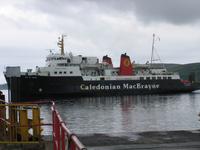 01. Calmac ferry
01. Calmac ferry
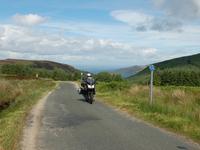 2. The Ross Road on Arran
2. The Ross Road on Arran
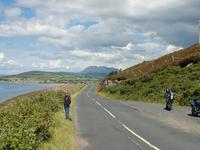 3. Coastal road on Arran (northwest side)
3. Coastal road on Arran (northwest side)
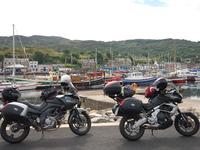 4. Fishing boats, luxury yachts and motorbikes in Tarbert
4. Fishing boats, luxury yachts and motorbikes in Tarbert
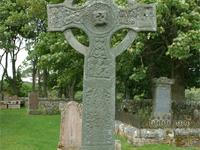 5. Kildalton Cross, Islay
5. Kildalton Cross, Islay
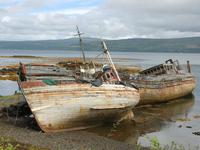 6. Shipwrecks on Mull
6. Shipwrecks on Mull
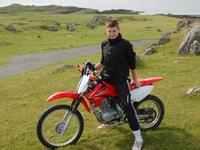 7. Young Tiree resident on a more suitable bike
7. Young Tiree resident on a more suitable bike
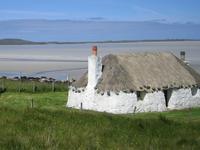 8. Thatched croft house on North Uist, Outer Hebrides
8. Thatched croft house on North Uist, Outer Hebrides
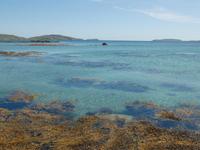 9. View from South Uist to Eriskay and Barra
9. View from South Uist to Eriskay and Barra
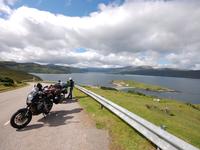 10. Loch Eriboll, Northwest Scotland
10. Loch Eriboll, Northwest Scotland
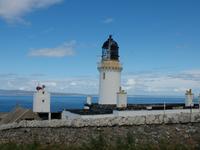 11. Lighthouse at Dunnet Head, Orkney Islands beyond
11. Lighthouse at Dunnet Head, Orkney Islands beyond
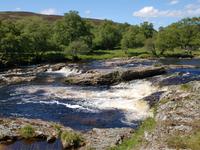 12. River Halladale
12. River Halladale
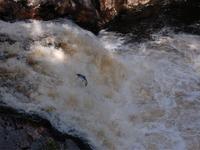 13. Salmon leaping up the Falls of Shin near Lairg
13. Salmon leaping up the Falls of Shin near Lairg
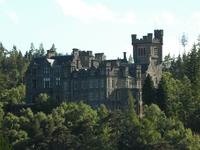 14. Carbisdale Castle
14. Carbisdale Castle
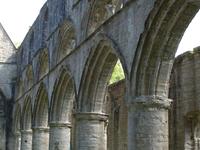 15. Dunkeld Cathedral ruins
15. Dunkeld Cathedral ruins
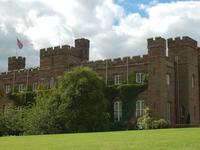 16. Scone Palace
16. Scone Palace
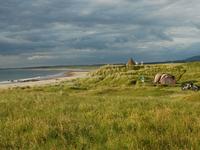 17. Kintra Farm campsite, Islay
17. Kintra Farm campsite, Islay
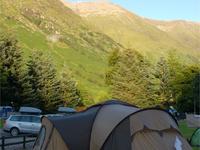 18. Glen Nevis campsite
18. Glen Nevis campsite
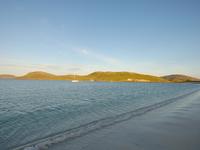 19. Vatersay Bay from the camping area in the dunes
19. Vatersay Bay from the camping area in the dunes
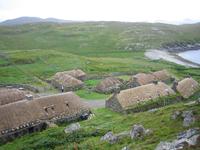 20. Gearrannan Blackhouse Village, Lewis
20. Gearrannan Blackhouse Village, Lewis
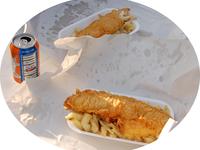 21. Fish and chips and Irn Bru
21. Fish and chips and Irn Bru
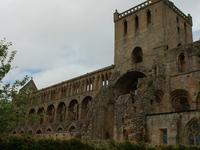 22. Jedburgh Abbey
22. Jedburgh Abbey
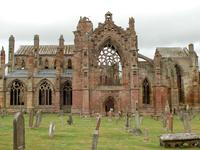 23. Melrose Abbey
23. Melrose Abbey
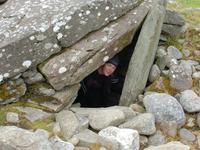 24. Temple Wood cairn
24. Temple Wood cairn
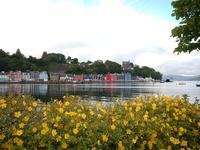 25. Tobermory, Mull
25. Tobermory, Mull
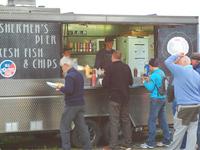 26. Fish and chip van in Tobermory, Mull
26. Fish and chip van in Tobermory, Mull
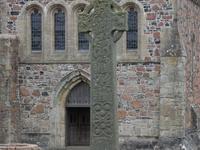 27. Iona Abbey
27. Iona Abbey
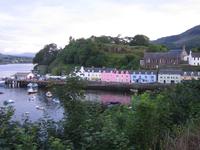 28. Portree, Isle of Skye
28. Portree, Isle of Skye
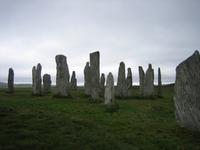 29. Callanish Standing Stones
29. Callanish Standing Stones
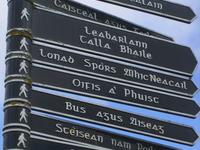 30. Sign in Stornoway, Lewis
30. Sign in Stornoway, Lewis
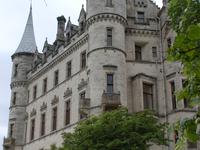 31. Dunrobin Castle
31. Dunrobin Castle
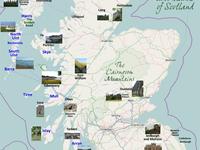 Map of the Highlands and Islands
Map of the Highlands and Islands